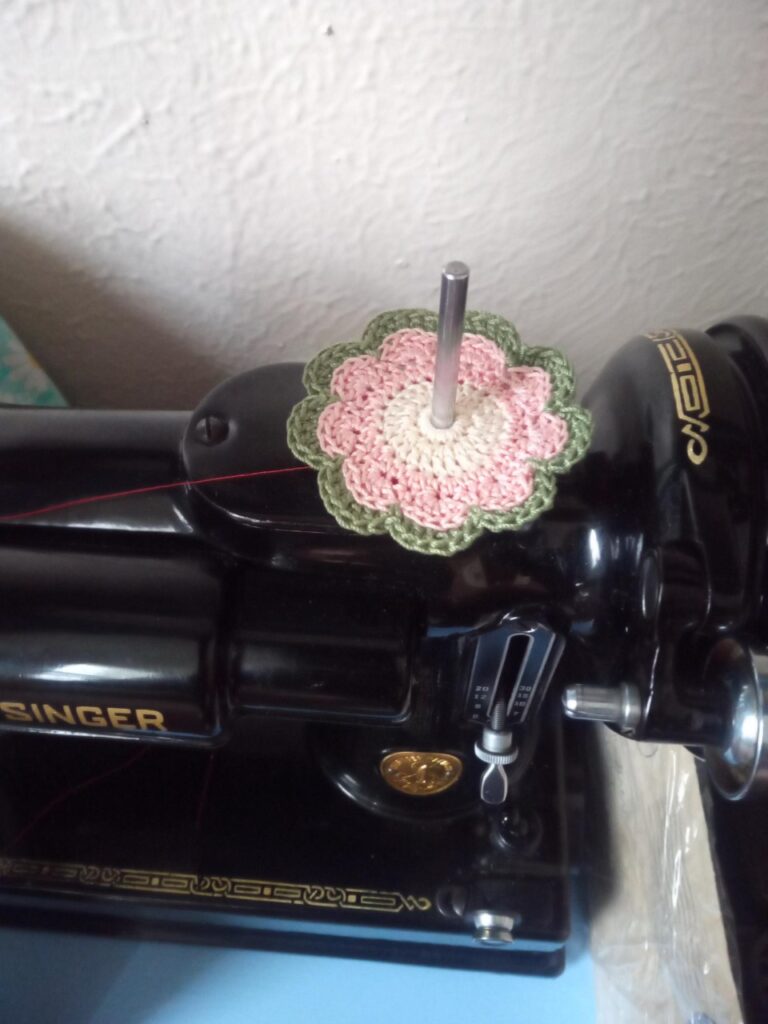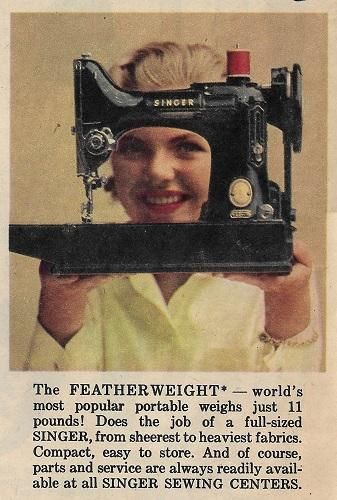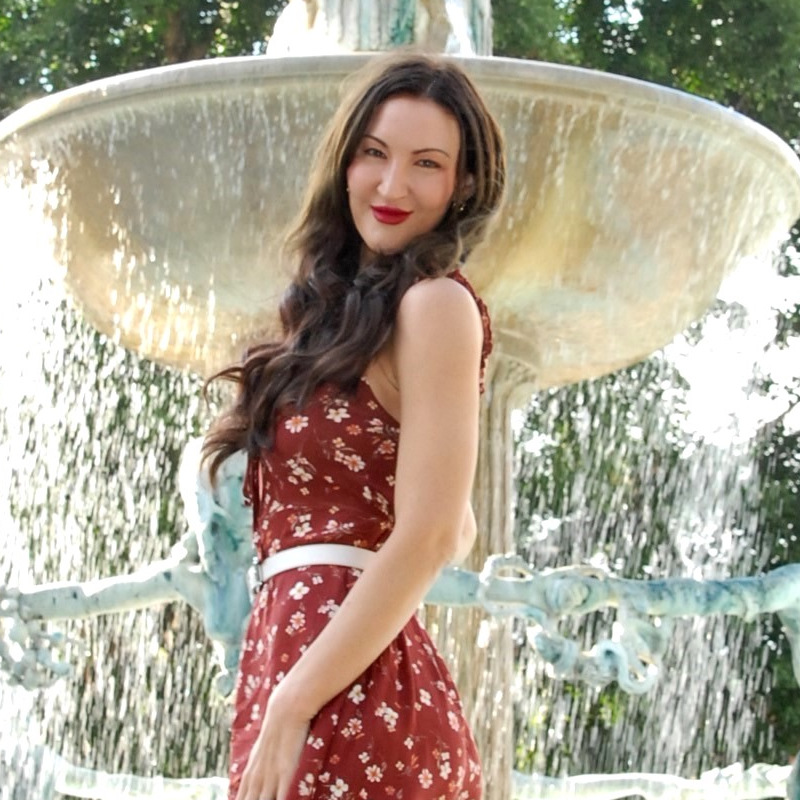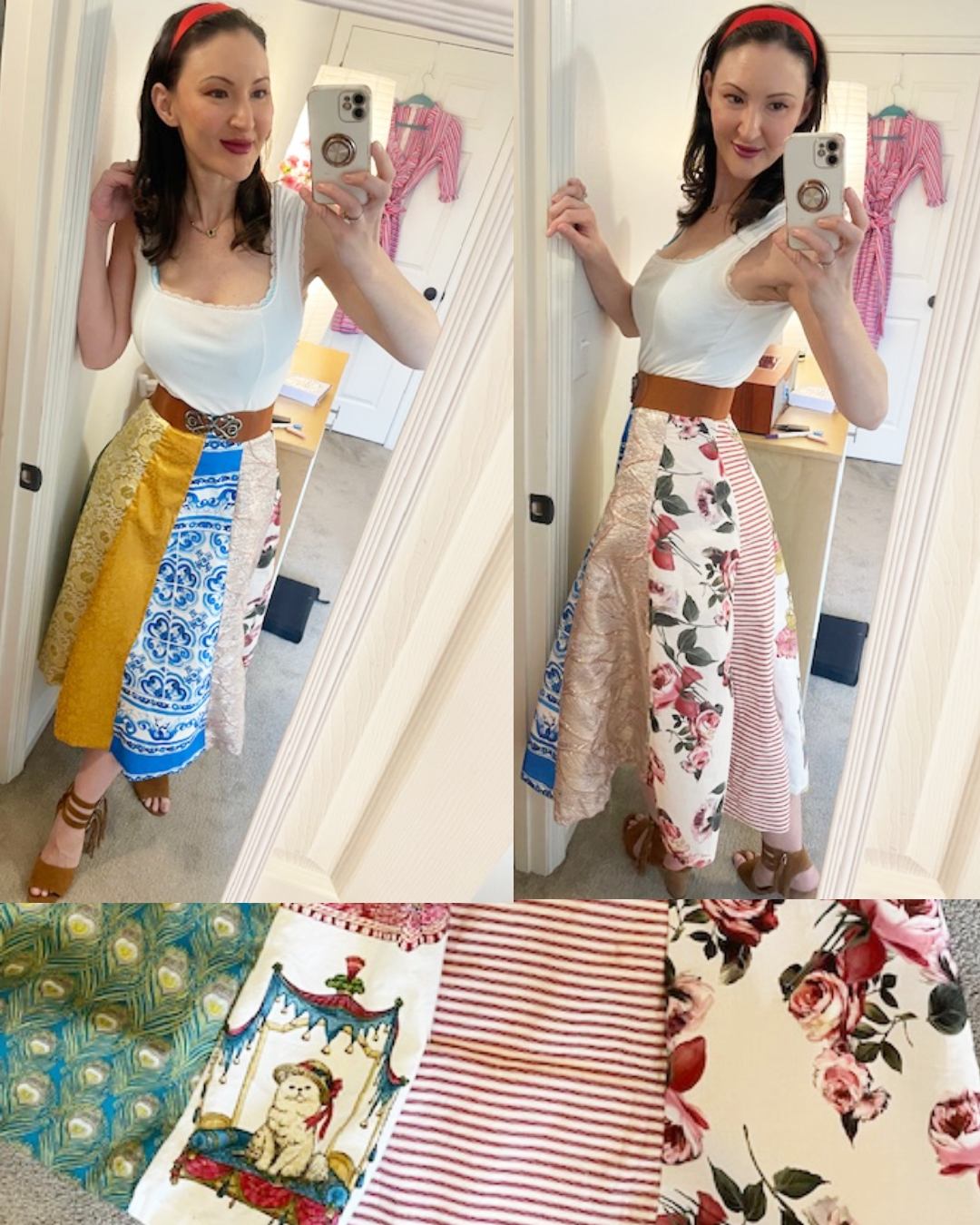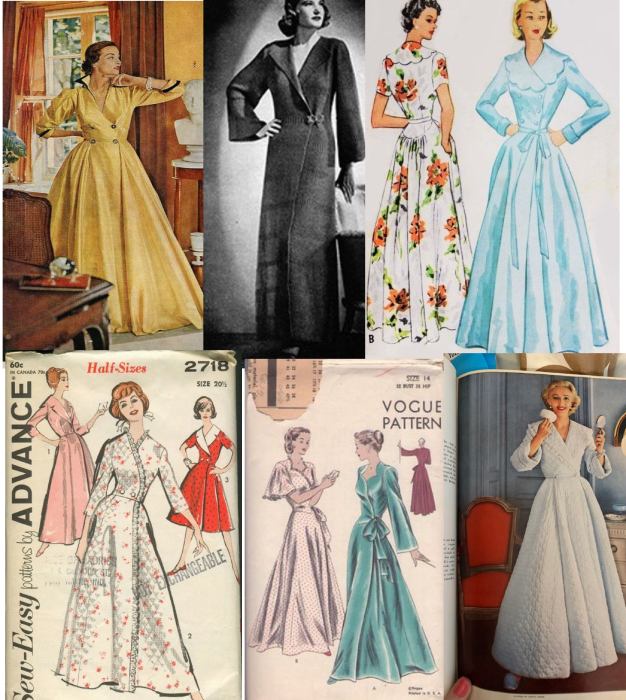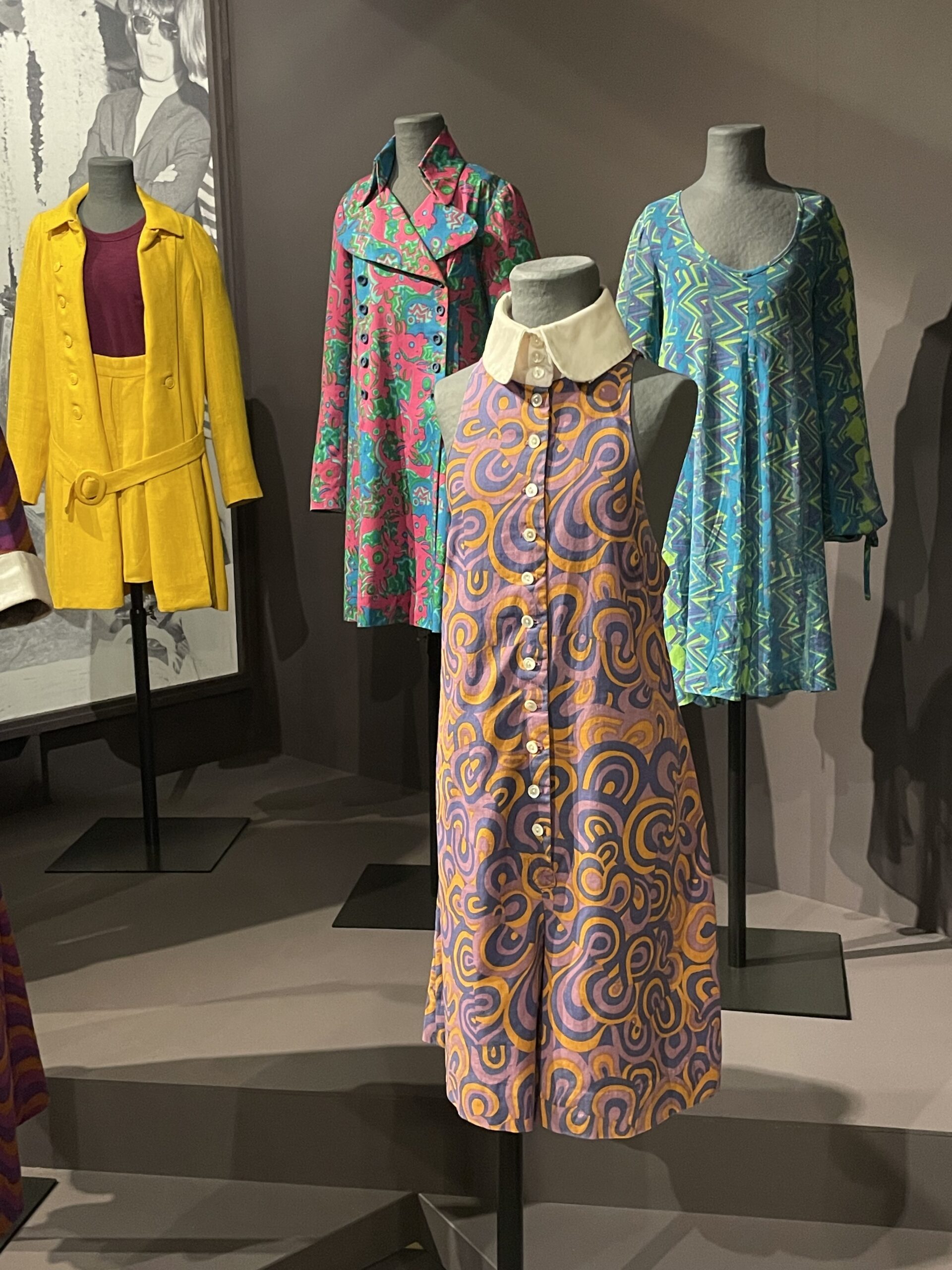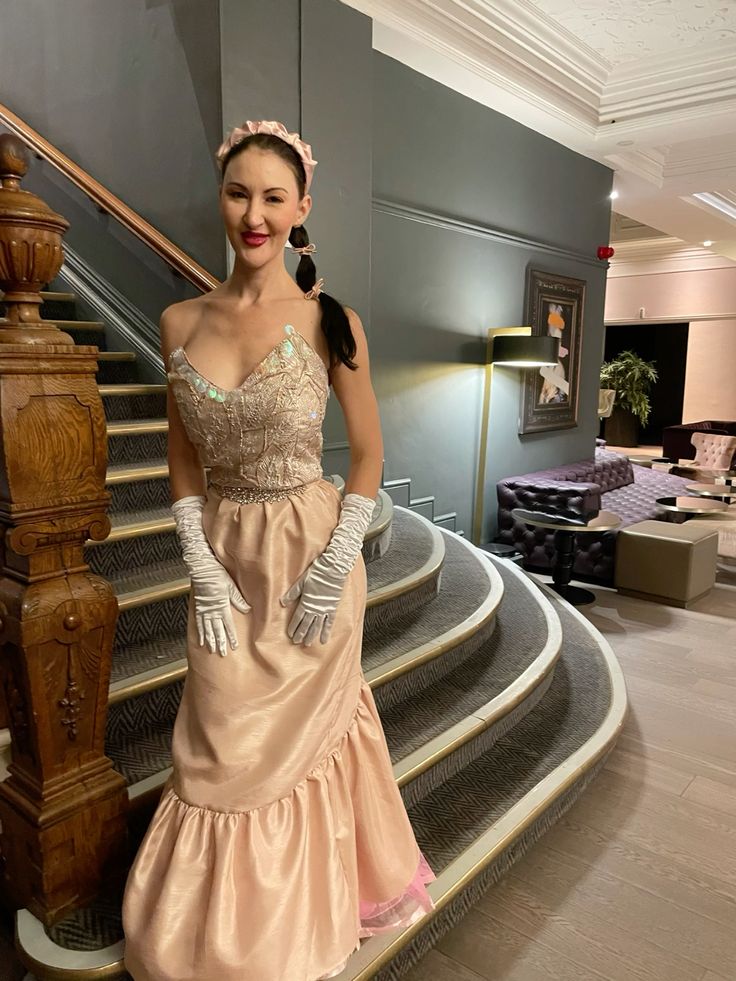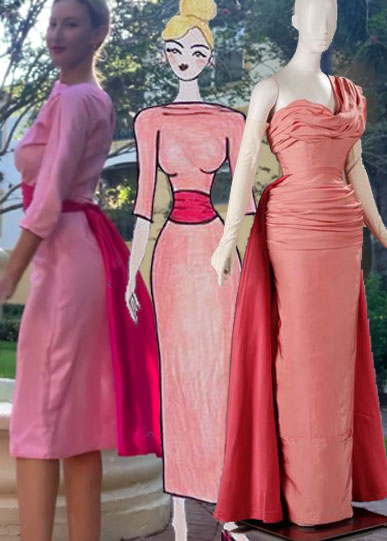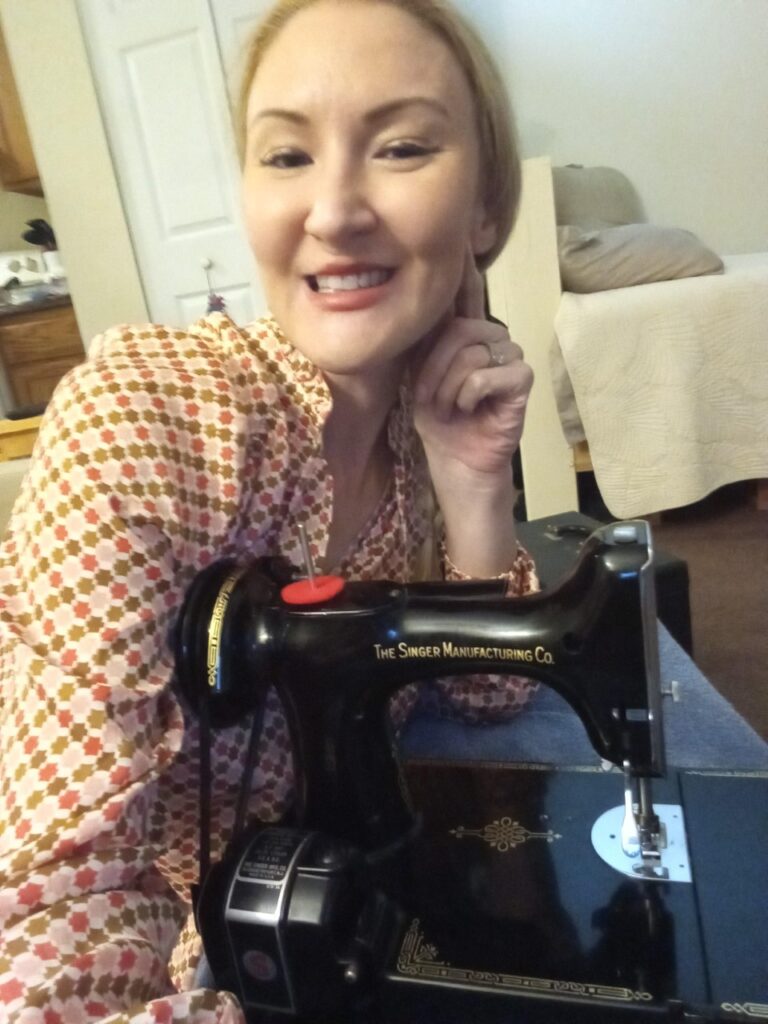
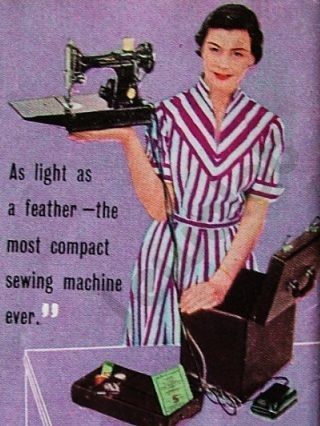
I am excited to share my newly acquired sewing machine with you! Her name is “Irene” and she is 73 years old. I have been admiring these 11 pound 4 oz vintage sewing machines for quite some time, and I was fortunate to find a thoroughly detailed listing for an impeccable unit in Toledo, Ohio which I could pick up in person when I was in the area. That is exactly what I did. When I saw the machine in front of me for the first time I was instantly impressed by how excellent the condition is, and the charming old machine scent. The machine has only the most minor of scratches (hard to even see) on the paint job, the cord, presser foot, and motor belt are all pristine, and the old light bulb even works. Most importantly, it sews perfect tight straight stitches in a quality that only a vintage machine can. Not to say my 1980’s Singer sewing machine doesn’t sew well, it does great, but there is something very special about how a vintage machine forms the stitches, and most people might not notice unless you are a person who loves sewing.
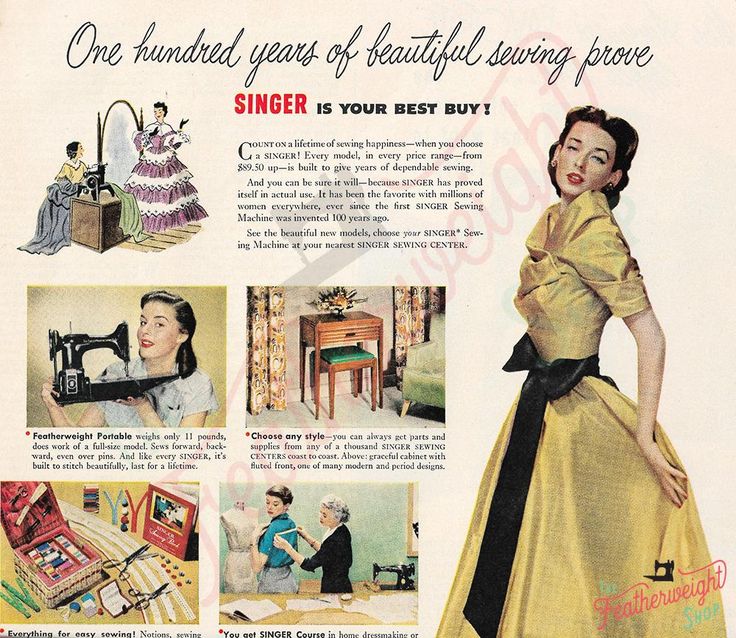
The featherweight came with the original box which is also not looking to bad for 73 years. It came with a buttonhole attachment, quite a few bobbins, the original manual, and several other goodies. The icing on the cake is that the sewing machine came with the original loan paperwork, a letter the owner received when she paid the loan off, and a Singer advertisement from the time. My husband even sees value in this sewing machine, after watching a man on youtube who is a sewing machine mechanic, talk about the virtues of the solid engineering on the machine and motor.
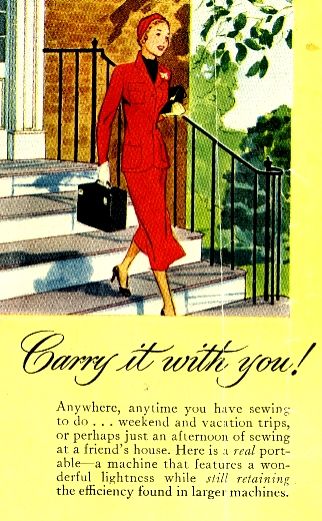
Have you ever watched the PBS show “History Detectives”? I enjoy that show, and with the help of my husband we did a little research using the paperwork included. The lady who originally purchased this sewing machine in 1950 was a young unmarried woman named Irene Henderer, who worked as a nurse in Spokane, Washington. Her name is engraved on the bottom of the sewing machine, and the presser foot. She clearly must have found this machine to be precious to her. In her honor I named the machine “Irene”, and I am not a person who typically names cars, or other objects, but this seems fitting. Irene the machine.
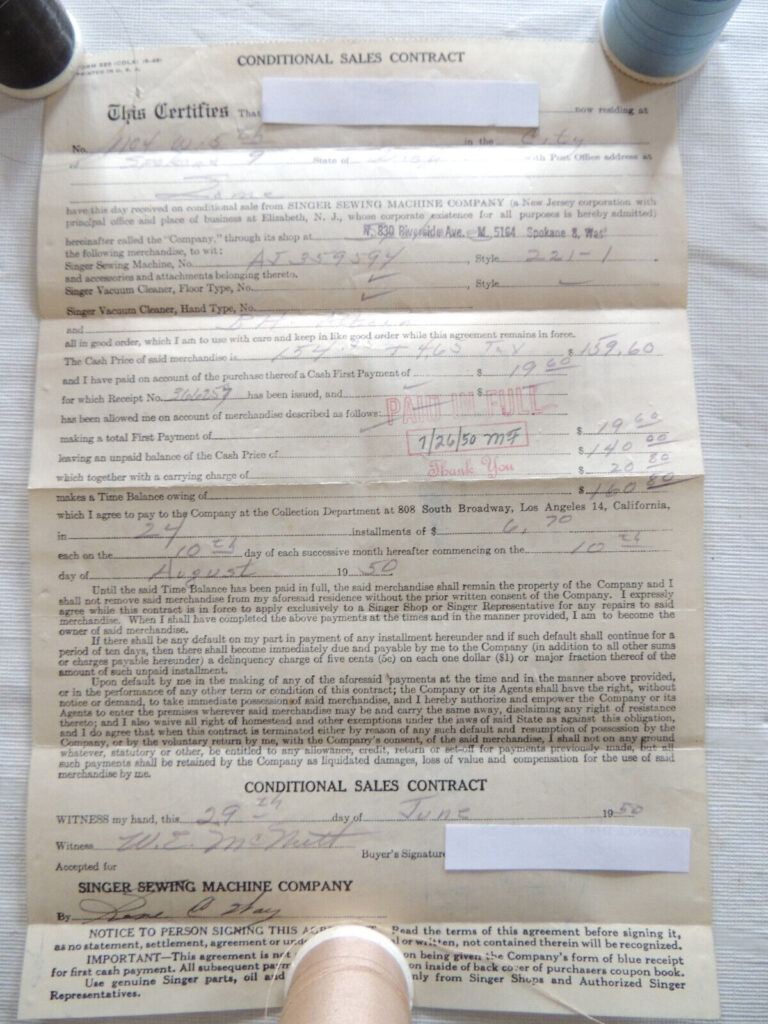
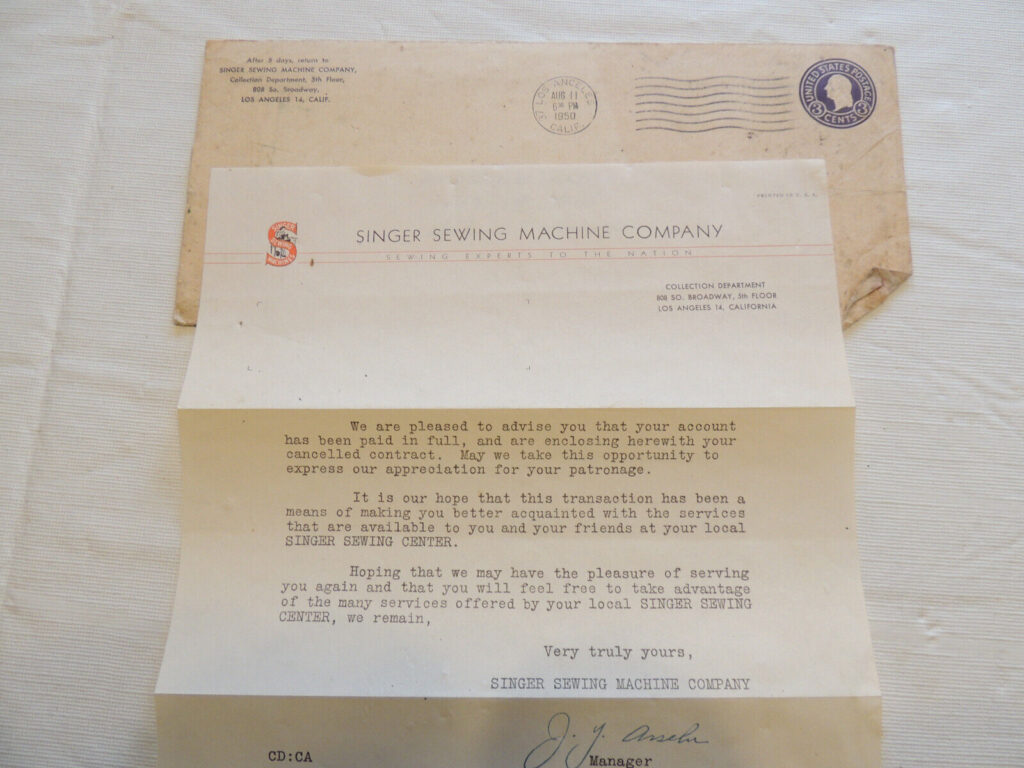
The Featherweight’s serial number indicates it was manufactured January 1950 in St. John’s Quebec, Canada with 40,000 others in the batch.

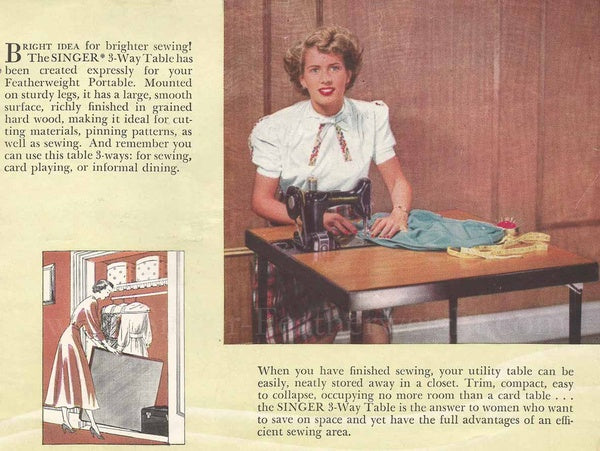
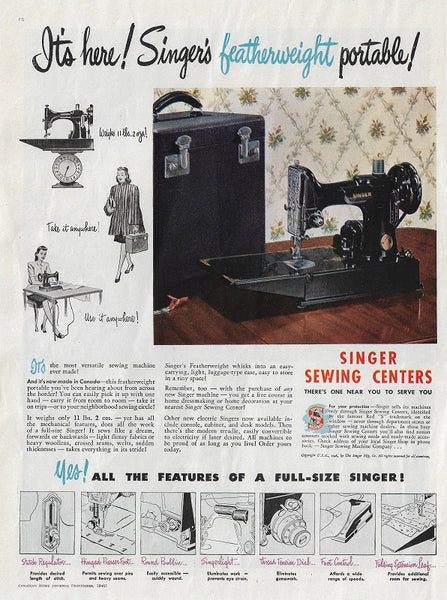
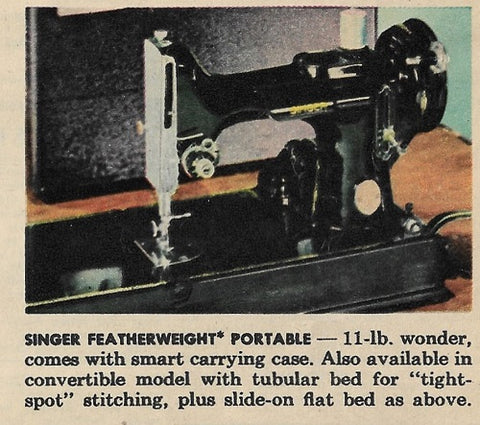
Singer produced the Featherweight sewing machines in the 221 and 222 models, the 222 free-arm version being a rare and expensive machine these days. The machines were typically black like mine, but if you come across the white, or especially the tan, that is an illusive discovery and worth more money to collectors. The black 221 like I bought is actually pretty common. 3 to 3.5 million Featherweight machines were produced around the world from 1933 to 1968.
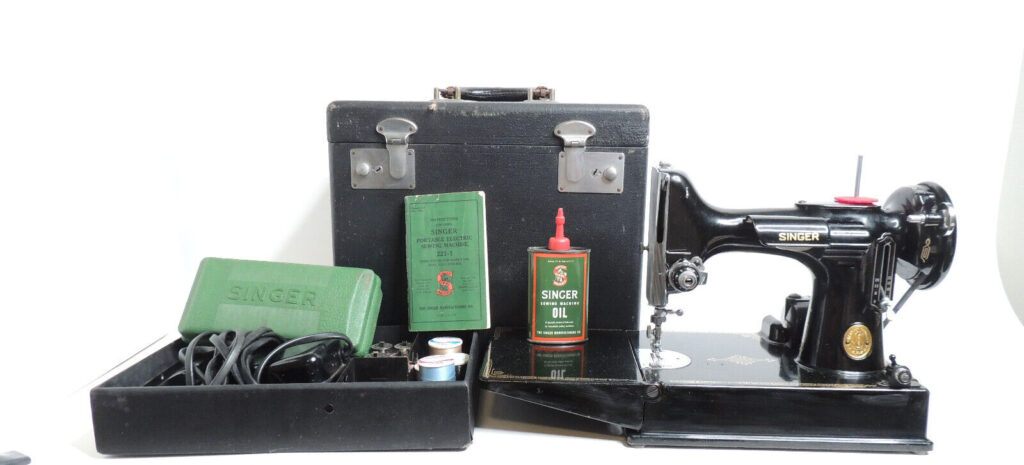
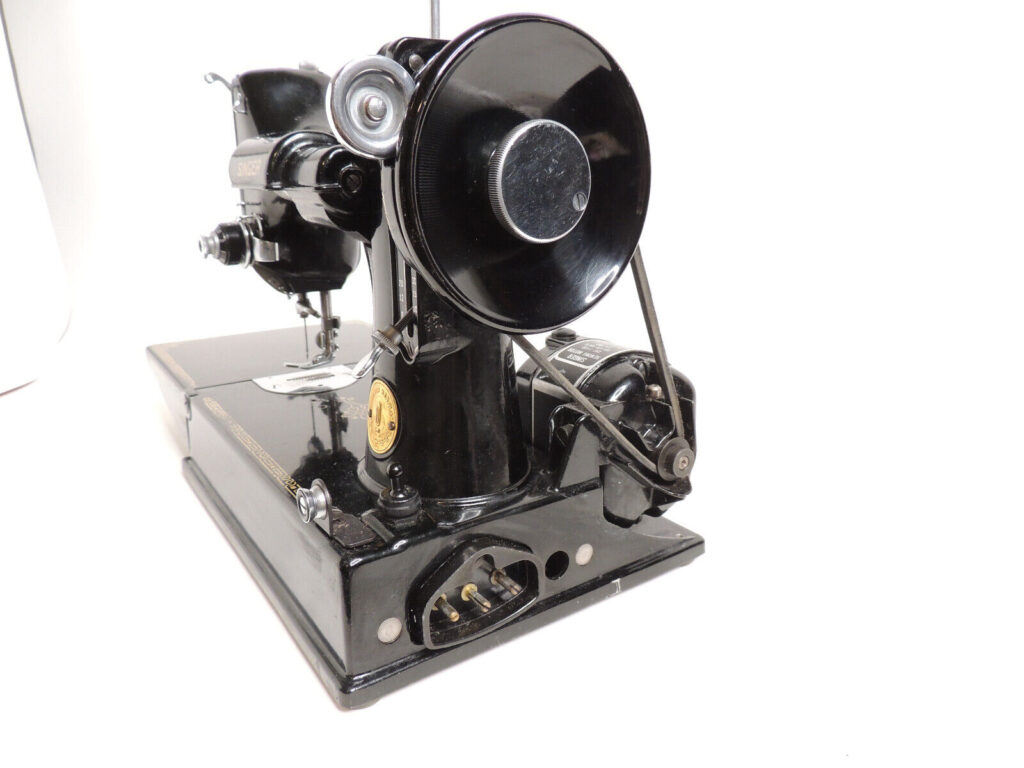
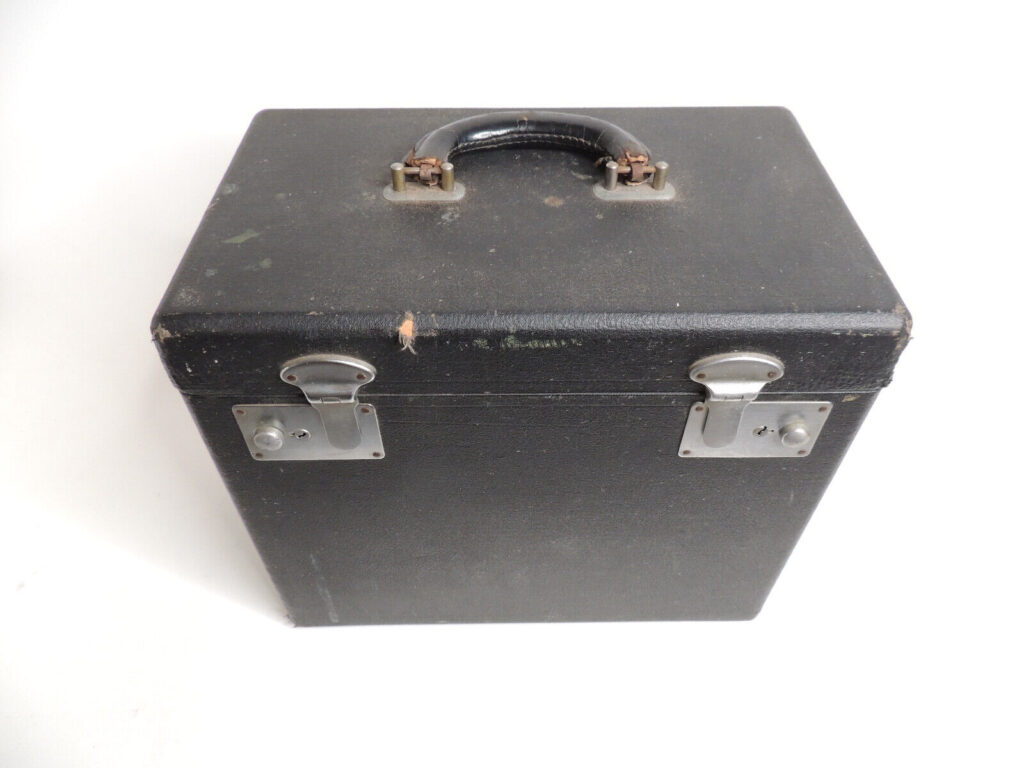
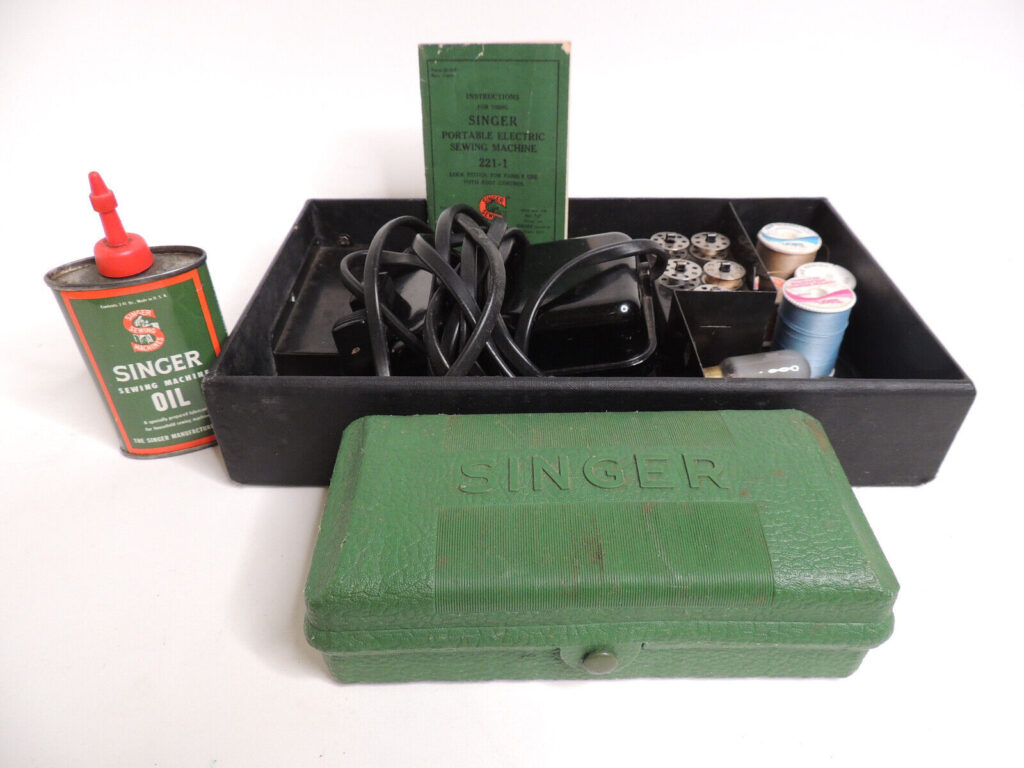
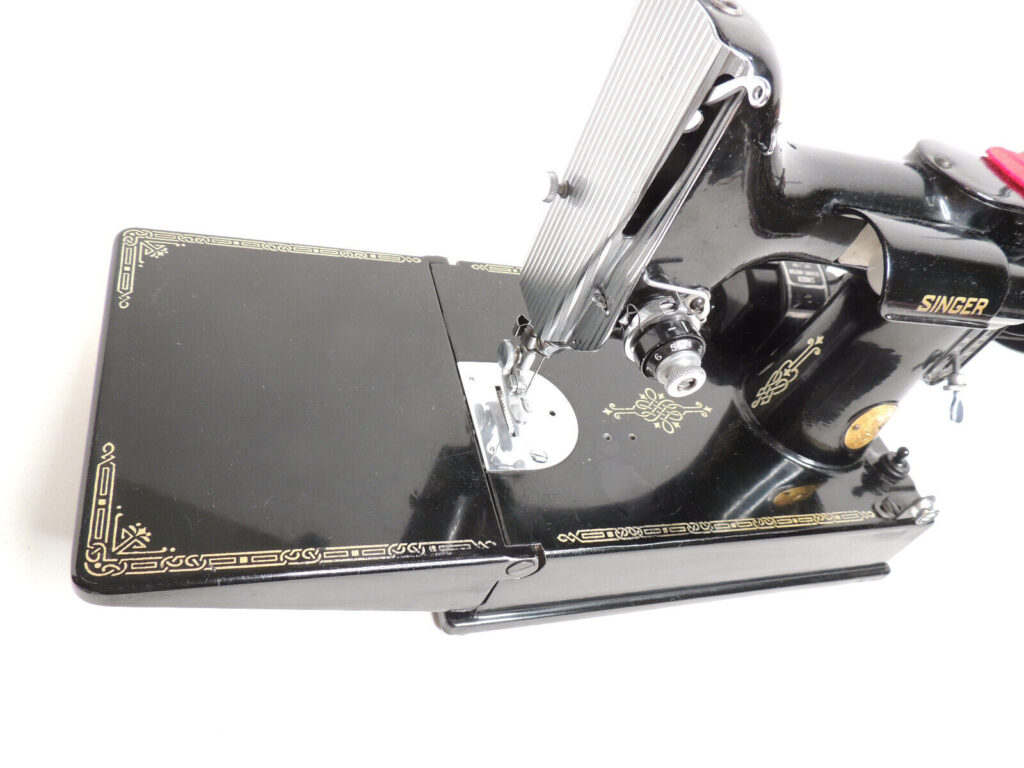
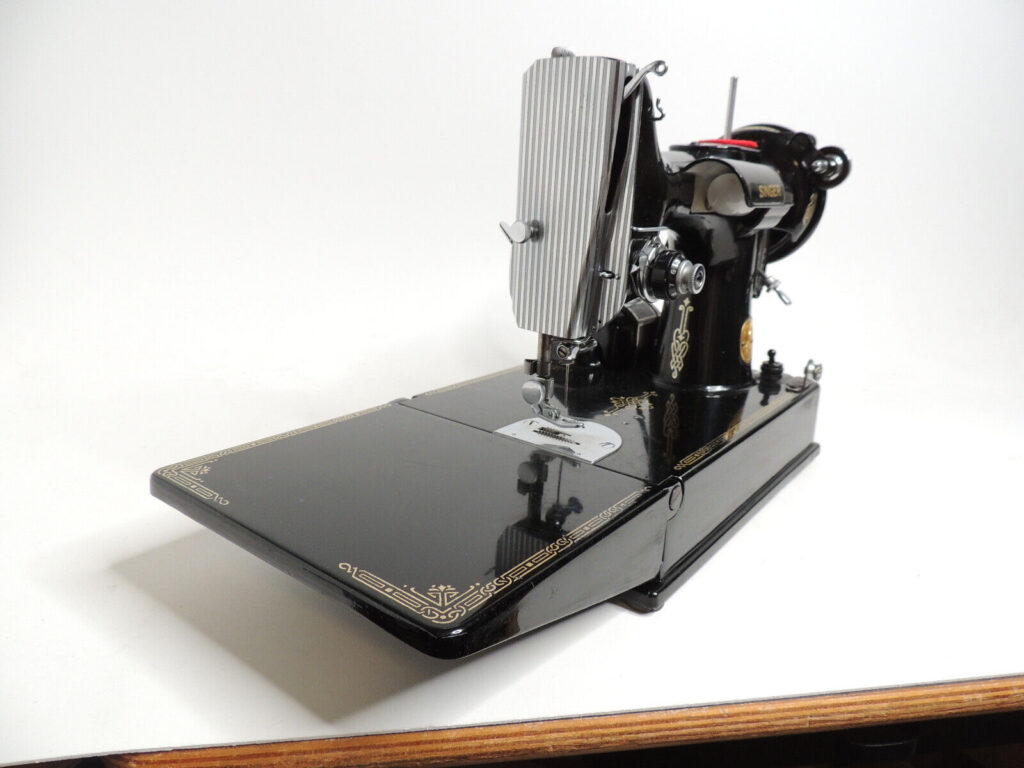
The Singer Featherweight is highly loved and sought after by a niche community of sewists, especially quilters. There are many online groups devoted to the machine, and the best resource in my opinion is the The Featherweight Shop which covers every topic under the sun associated with Featherweights, from troubleshooting, to history, to meet-ups, and everything in between. I have found the website to be very helpful to me in learning how to thread my machine, wind the bobbin, and care for it. I plan to use this sewing machine to mainly sew garments, especially those from vintage sewing patterns. I love the way the machine sews, and I also like the way it smells and how quiet it is. I look forward to my first sewing project with it.
